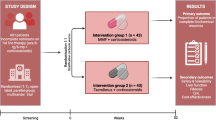Abstract
Background
Autoimmune hepatitis (AIH) is a chronic liver disease able to progress to acute liver failure, cirrhosis, and liver cancer. A significant proportion of patients fail to first-line therapy or develop severe toxicity.
Aims
To assess safety and effectiveness of tacrolimus as a second-line therapy in AIH patients.
Methods
Multicentric retrospective study of AIH patients treated with tacrolimus for at least 3 months as a second-line therapy. Effectiveness was defined as complete normalization of transaminases and IgG.
Results
A total of 23 AIH patients were included in the final analysis. In 13% of patients tacrolimus was initiated because of toxicity to previous first-line treatments and the rest were switched because of previous non-efficacy. Tacrolimus was effective in 18 patients (78%; 95%CI: 55.20–91.92%). The median time receiving tacrolimus was 16 months (IQR 20). There was a sustained response with a significant improvement in all liver enzymes and IgG on last follow-up. Only one patient discontinued tacrolimus at the third month because of severe neuropathy, and ototoxicity. Responders were significantly older at diagnosis of AIH (41 ± 13 vs. 27 ± 10 years old; p = 0.0496).
Conclusion
Tacrolimus is effective and well tolerated as a second-line therapy in patients with AIH.

Similar content being viewed by others
Abbreviations
- AEMPS:
-
Agencia Española de Medicamentos y Productos Sanitarios (Spanish Drug Agency)
- AIH:
-
Autoimmune hepatitis
- ALT:
-
Alanine aminotransferase
- AP:
-
Alkaline phosphatase
- AST:
-
Aspartate aminotransferase
- EPA - OD:
-
Estudio Postautorización - Otros Diseños (Post-authorization study—other designs)
- GGT:
-
Gamma-glutamyltransferase
- HBV:
-
Hepatitis B virus
- HCV:
-
Hepatitis C virus
- HIV:
-
Human immunodeficiency virus
- IgG:
-
Immunoglobulin G
- INR:
-
International normalized ratio
- IQR:
-
Interquartile range
- mTOR:
-
Mammalian target of rapamycin
- SD:
-
Standard deviation
References
European Association for the Study of the Liver. EASL clinical practice guidelines: autoimmune hepatitis. J Hepatol. 2015;63:971–1004.
Feld JJ, Heathcote EJ. Epidemiology of autoimmune liver disease. J Gastroenterol Hepatol. 2003;18:1118–1128.
Adam R, Karam V, Cailliez V, et al. 2018 Annual Report of the European Liver Transplant Registry (ELTR)—50-year evolution of liver transplantation. Transpl Int. 2018;31:1293–1317.
Cook GC, Mulligan R, Sherlock S. Controlled prospective trial of corticosteroid therapy in active chronic hepatitis. Q J Med. 1971;40:159–185.
Jones D, Manns MP, Terracciano L, Torbenson M, Vierling JM. Unmet needs and new models for future trials in autoimmune hepatitis. Lancet Gastroenterol Hepatol. 2018;3:363–370.
Liberal R, de Boer YS, Andrade RJ, et al. Expert clinical management of autoimmune hepatitis in the real world. Aliment Pharmacol Ther. 2017;45:723–732.
Rodríguez-Perálvarez M, Guerrero-Misas M, Thorburn D, Davidson BR, Tsochatzis E, Gurusamy KS. Maintenance immunosuppression for adults undergoing liver transplantation: a network meta-analysis. Cochrane Database Syst Rev. 2017;3:CD011639.
Van Thiel DH, Wright H, Carroll P, et al. Tacrolimus: a potential new treatment for autoimmune chronic active hepatitis: results of an open-label preliminary trial. Am J Gastroenterol. 1995;90:771–776.
Aqel BA, Machicao V, Rosser B, Satyanarayana R, Harnois DM, Dickson RC. Efficacy of tacrolimus in the treatment of steroid refractory autoimmune hepatitis. J Clin Gastroenterol. 2004;38:805–809.
Chatur N, Ramji A, Bain VG, et al. Transplant immunosuppressive agents in non-transplant chronic autoimmune hepatitis: the Canadian association for the study of liver (CASL) experience with mycophenolate mofetil and tacrolimus. Liver Int. 2005;25:723–727.
Larsen FS, Vainer B, Eefsen M, Bjerring PN, Adel Hansen B. Low-dose tacrolimus ameliorates liver inflammation and fibrosis in steroid refractory autoimmune hepatitis. World J Gastroenterol. 2007;13:3232–3236.
Than NN, Wiegard C, Weiler-Normann C, et al. Long-term follow-up of patients with difficult to treat type 1 autoimmune hepatitis on Tacrolimus therapy. Scand J Gastroenterol. 2016;51:329–336.
Al Taii H, Hanouneh MA, Hanouneh I, Lopez R, Zein N, Alkhouri N. The use of tacrolimus in refractory autoimmune hepatitis in children and adults: a single center experience. Scand J Gastroenterol. 2017;52:157–158.
Tannous MM, Cheng J, Muniyappa K, et al. Use of tacrolimus in the treatment of autoimmune hepatitis: a single centre experience. Aliment Pharmacol Ther. 2011;34:405–407.
Efe C, Hagström H, Ytting H, et al. Efficacy and safety of mycophenolate mofetil and tacrolimus as second-line therapy for patients with autoimmune hepatitis. Clin Gastroenterol Hepatol. 2017;15:1950–1956.e1.
Hennes EM, Zeniya M, Czaja AJ, et al. Simplified criteria for the diagnosis of autoimmune hepatitis. Hepatology. 2008;48:169–176.
Wang Q, Yang F, Miao Q, Krawitt EL, Gershwin ME, Ma X. The clinical phenotypes of autoimmune hepatitis: a comprehensive review. J Autoimmun. 2016;66:98–107.
Wörns MA, Teufel A, Kanzler S, et al. Incidence of HAV and HBV infections and vaccination rates in patients with autoimmune liver diseases. Am J Gastroenterol. 2008;103:138–146.
Rodríguez-Perálvarez M, Guerrero M, De Luca L, et al. Area under trough concentrations of tacrolimus as a predictor of progressive renal impairment after liver transplantation. Transplantation. 2019;103:2539–2548.
Funding
This is an independent study with no financial support.
Author information
Authors and Affiliations
Corresponding author
Ethics declarations
Conflict of interest
Authors declare no conflict of interest regarding this manuscript.
Additional information
Publisher's Note
Springer Nature remains neutral with regard to jurisdictional claims in published maps and institutional affiliations.
Rights and permissions
About this article
Cite this article
Ferre-Aracil, C., Riveiro-Barciela, M., Trapero-Marugán, M. et al. Tacrolimus as an Effective and Durable Second-Line Treatment for Chronic Autoimmune Hepatitis: A Multicentric Study. Dig Dis Sci 66, 2826–2832 (2021). https://doi.org/10.1007/s10620-020-06569-9
Received:
Accepted:
Published:
Issue Date:
DOI: https://doi.org/10.1007/s10620-020-06569-9




